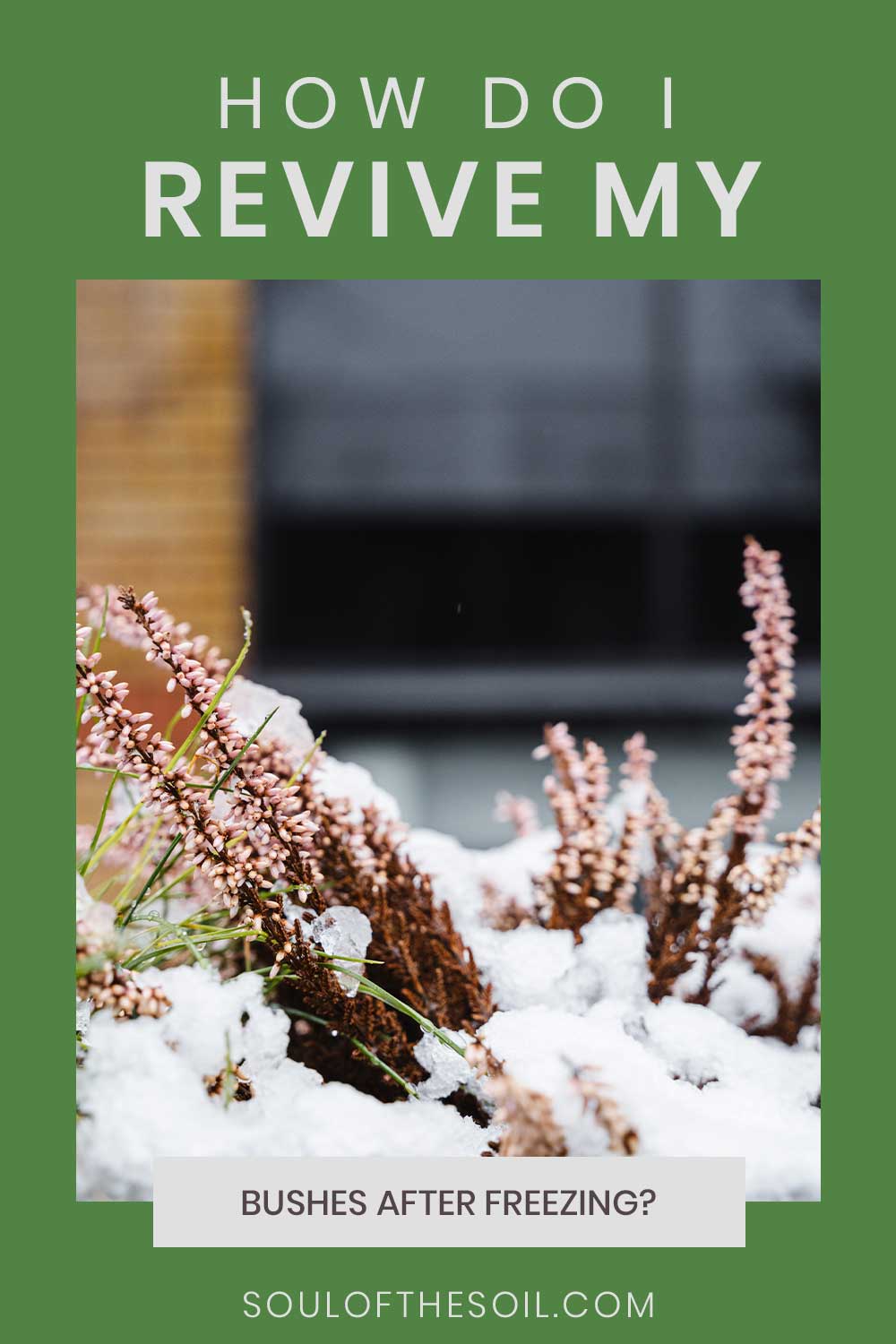How Do I Revive My Bushes After Freezing?
We may earn commissions for purchases made through links on our site. Learn more on our about us page.
In most cases, plants are able to recover fully after experiencing brief periods of light freezing. However, the future is unknown after such a harsh and protracted cold period.
Therefore, be patient when the ice does finally start to melt. You shouldn’t rush to get the pruning shears and immediately cut things off.

How Fast Should You React?
Move the plant as quickly as possible to a spot that is warmer. It is not recommended that you remove any dead leaves; rather, you should concentrate on warming the plant as a whole.
The process of recovery might start as soon as the temperature rises (how quickly it depends on how long you were exposed to the cold).
What Do You Need to Do First?
If you were unprepared and some of your bushes were damaged by the cold, you can take steps to help them recover.
How much damage is done is proportional to how cold it gets and how long it stays that way. Plants/bushes are usually able to bounce back from brief periods of light freezing. However, there is no assurance after severe and prolonged freezing.
When the ice finally melts, be patient. You shouldn’t grab the secateurs and start trimming right away.
The extent of the damage to the plants won’t become apparent for several days. However, to prevent further fungal infection or disease, removing any mushy or slimy debris from plants is important.
To tidy up, you can remove the decaying matter. It’s preferable to hold off until spring to prune woody plants.
Scratching the bark of stems and looking for green color underneath might reveal whether or not a woody plant or perennial is still alive. If you see a green light, you’re in the clear. Your plant appears to be doing fine.
Is it Possible to Revive all of it?
It’s hard to say without knowing more about the bush and how long it was exposed to the cold. Scratching the bark is one way to see if the plant’s roots are still alive.
If the bush is still green at its core despite being bare of leaves due to cold shock, it likely has healthy tissue just beneath the bark. After the weather improves, it can start flowering again.
First, make sure these plants receive enough water, and then, once frost danger has passed, apply a garden fertilizer.
It relies on a wide range of factors on whether or not a frozen plant may be saved. However, prevention is always preferable to treatment.
Therefore, taking preventative measures prior to the onset of colder weather is highly recommended, as is always consulting with a professional landscaper.
How to Protect it from Future Freezing?
Some plants can be protected against a mild freeze by being wrapped in a sheet or blanket. This provides insulation for the plant by preventing the warm air from the soil from escaping. When the temperature drops briefly, the plant might not freeze if it is kept warm.
When protecting plants from a freeze, placing plastic over the sheets or blankets is an extra layer of defense. However, you should never use plastic wrap alone to protect your plants. Instead, a cloth should be used as a buffer between the plastic and the plant.
After a night in a cold environment, the first thing you should do in the morning is throw off the covers. Condensation can build up and freeze again under the covering, causing damage to the plant if this isn’t done.
Building insulating barriers around plants is another option to prevent frost damage if you know it’s coming. Make a nice bow around the plant’s stem.
Plant-sized stakes should be driven into the ground around the plant’s base. Burlap the stakes to make it look like a fence surrounds the plant. Stuff hay or leaves inside this fence.
Useful Tips for Reviving Bushes
There is no universal definition of “dead” when it comes to plants. At first glance, it can appear that your plant is dead, but a deeper inspection might reveal that it’s still alive and well. The plant may be salvageable if there is still green on it.
Remove damaged or diseased leaves and branches, and sometimes even the entire plant, if the roots are severely harmed.
As a result, the roots will have less weight to carry and will be able to recover more rapidly. The next step is to remove the browning portions of the stems. Ideally, new stems would form from the cuts made.
Final Thoughts on How Do You Revive Your Bushes After Freezing
It is more than likely that your bushes are going to freeze in low temperatures. But that doesn’t mean it’s the end for your plant. They can be saved if they are still green underneath the bark.
There are also ways you can prevent your bushes from freezing you. First, you are aware that there is some cold weather coming. This will give you time to prepare and get ahead of the freeze so you can help your bushes.



Leave a Reply
You must be logged in to post a comment.